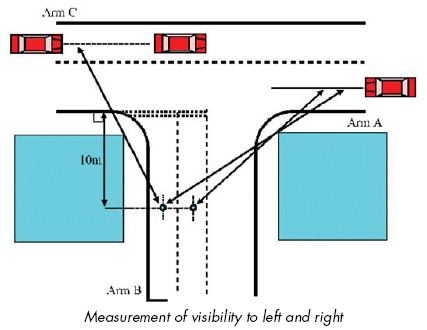The 10 metre visibility position comes from the original regression analysis carried out by TRL. In the original study the measurement of visibility was measured from a number of different points. The measurement of 10 metres was found during the analysis to provide the strongest link between it and the capacity.
Unfortunately this does not match up with the values that most traffic engineers will have. There is unfortunately no possible way to translate this value so that it represents the visibility from another point as it depends on the proximity of the obstructions that make the parameters the value it is. You can use, say, a scale diagram but it is always best to do measurements on-site if possible so that ALL obstacles that are present during the time period you are interested in are taken account of. E.g. high-sided vehicles parked throughout the modelled time in such a way to reduce visibility should be taken account of, if you wish to gain accurate results.
